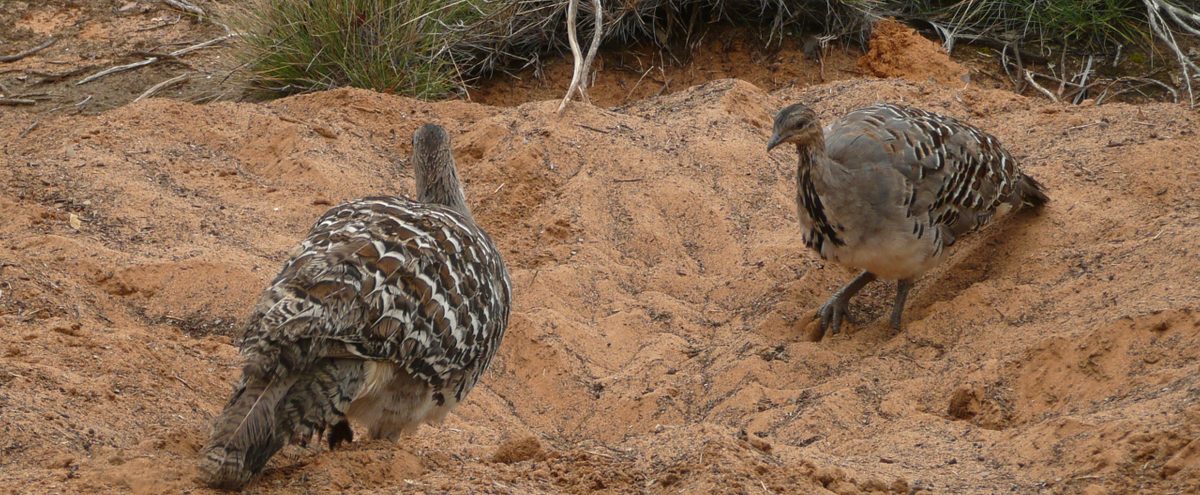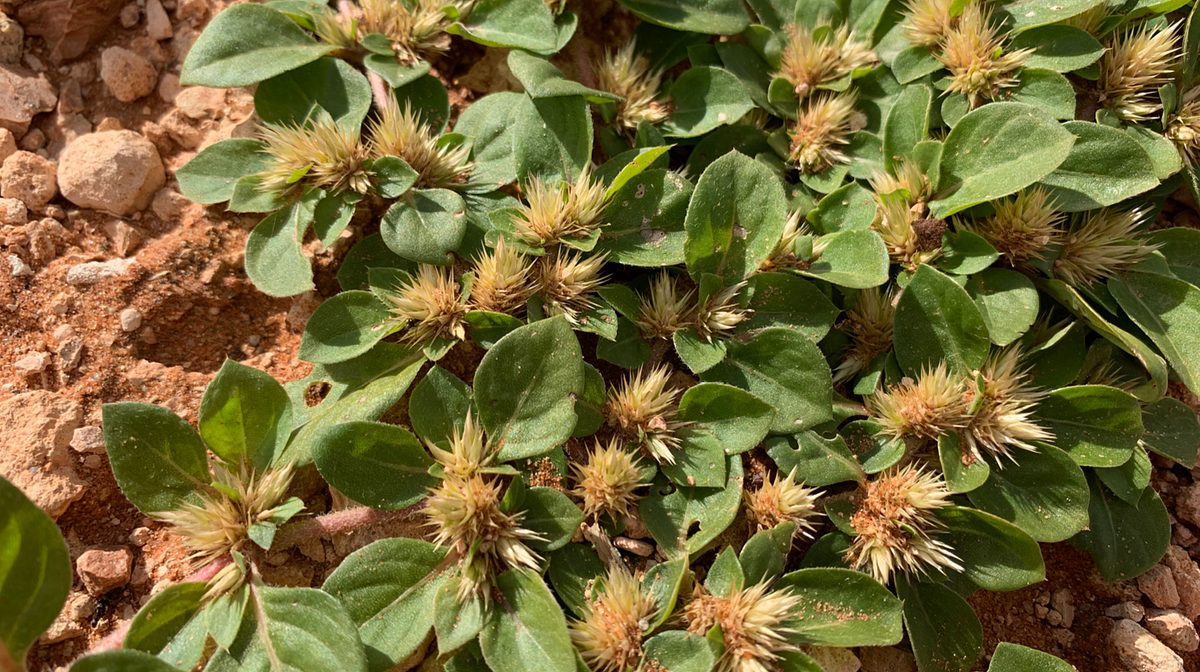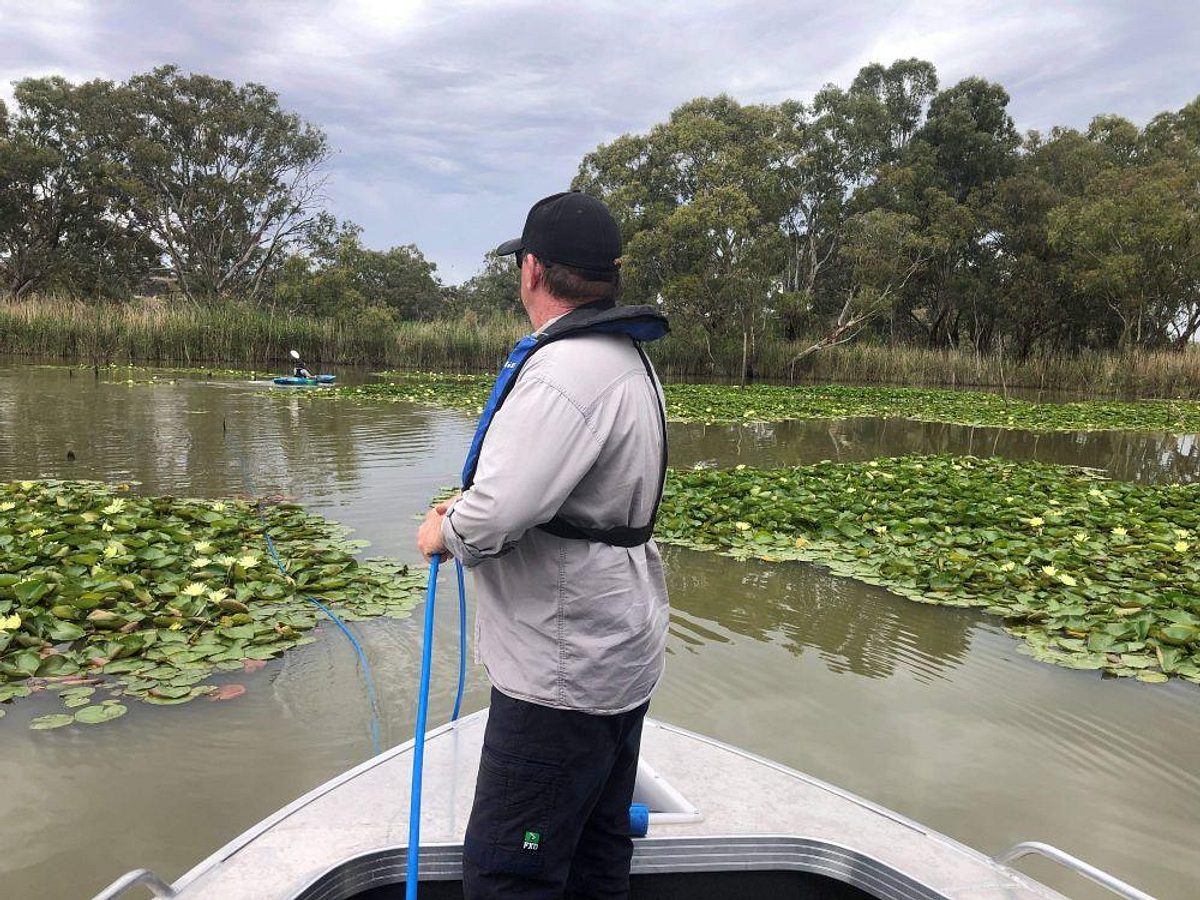Malleefowl monitoring: technology and citizen scientists go hand-in-hand

How technology and citizen scientists contributed to science – describing what LiDAR is and how volunteers have been contributing with on-ground mound monitoring.
Malleefowl need their space… like, a lot of space!
If there’s one thing malleefowl aren’t shy about, it’s their real estate needs - they need space...and not just a little patch here and there, we’re talking big backyards! Luckily, as we touched on in the last blog, our own Murraylands and Riverland region still has some room to offer these mound-building legends.
Why so much space, though? Well, here are a few more fun facts:
- Malleefowl build massive mound-nests, and each one can be ‘active’ (meaning it’s in use with eggs inside) or ‘inactive’ (basically, vacant).
- They often reuse the same mound across breeding seasons.
- Sometimes they swap to another mound for reasons that still stump scientists.
- They also build brand-new mounds now and then.
- And in tough years, they might not breed at all.
Put all that together, and you get malleefowl scattering a network of mounds across large stretches of mallee scrub. It’s like a secret map of nesting hotspots!

Crunching the numbers (with a bit of help)
Thanks to some serious detective work by scientists and a small army of dedicated volunteers (more on them shortly), we’ve now got a better picture of just how many mounds are out there - and where the action’s happening.
Between 2016 and 2022, in the more fertile ‘agricultural’ areas south of the Murray River, researchers found an average of 0.119 nests per hectare. Of those, around 14.6% were active - that’s about 2.3 nests per Adelaide Oval, but you’d need 3 ovals just to find one that’s active!
Meanwhile, in the drier ‘pastoral’ lands up north, the numbers dropped to 0.062 nests per hectare, and only 1.57% were active. That’s like 1.24 nests per Adelaide Oval, and you’d need a whopping 50 ovals just to find one with eggs. Luckily, there’s a whole lot more habitat up there to spread the love.
How the heck did they work that out?
Citizen scientists to the rescue
Malleefowl monitoring isn’t a stroll in the park - it’s full-on! Whether it’s boots-on-the-ground hiking or scanning camera-trap images, it takes loads of people and plenty of dedication. That’s where our amazing volunteers, AKA ‘citizen scientists’, come in.
Over seven years, they helped monitor 32 different sites, each 4 square kilometres in size. Every year, 24 of those sites were checked for signs of breeding, feathers, tracks, predator activity, and, of course, those iconic mounds.
Why all the effort? Because the percentage of active mounds gives us a snapshot of the population. And tracking this over time helps us understand if malleefowl numbers are growing, shrinking, or staying steady. To keep everything accurate, sites are regularly re-checked to catch any new mounds that might’ve popped up.

Enter the tech!
Here’s where it gets seriously cool: LiDAR. Never heard of it? It stands for “Light Detection and Ranging” and it uses laser pulses to map the ground in 3D. In this case, it helps scientists find malleefowl mounds from above!
During the project, three more mound-monitoring sites were added. Two of these used LiDAR tech, thanks to collaborations with the Australian Defence Force and NSW Local Land Services and Department of Climate Change, Energy, the Environment and Water (NSW Government). One site used manned aircraft, the other used drones (with volunteers on the ground to double-check). The result? They found 104 mounds and did it way faster than traditional aerial photography or foot surveys.
For now, it turns out manned aircraft are better at covering big areas, but drones have a growing role, too. Either way, this tech is saving heaps of time, effort, and money.
Brains, brawn, and hope
The combo of cutting-edge tech and good old-fashioned people power is a game-changer. It’s making malleefowl monitoring smarter, faster, and way more efficient. So next time someone says “work smarter, not harder” - you can point them to the malleefowl team.
There’s still plenty of work to do, but with so many people (and lasers!) on the case, things are looking up. So yep, watch this space, because the malleefowl story is far from over, and it’s only getting more exciting.
Written by Phil Barron, 2025.
If you're interested in volunteering for malleefowl monitoring, visit our FLOW page for further information.
Header image: Lew Westbrook


